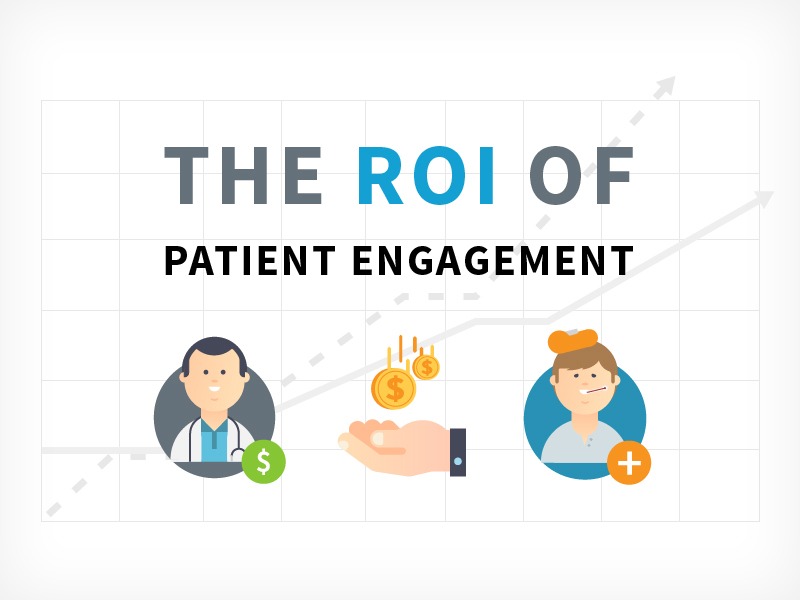5 Physician Fears About Patient Portals and How to Overcome Them
The good news is that patient portal adoption is on the rise. Seventy-two percent of more than 500 practices nationwide use a portal, according to the 2017 Physicians Practice Technology Survey. This number is up from nearly 62% just one year earlier. The bad news is that some practices continue to struggle with the operational challenges that portals can create, says Jake Fochetta, manager at ECG Management Consultants, Inc. in Boston. Others see these challenges as barriers to implementation and end up either activating only a few meaningful portal features or avoiding portals altogether, he adds.
What exactly do physicians fear? Most common is a fear that patients simply won’t engage with the technology. (See my previous article: 4 Tips to Boost Patient Portal Use.) In addtion, these four common fears prevent practices from taking advantage of patient portal benefits:
1. Fear of Increased Workload
How can practices avoid this? Proactive planning, says Fochetta: “The biggest mistake that practices make as they’re trying to meet Meaningful Use or wanting to immediately engage their patients is that they turn features on without really considering a structured approach to maintenance and staffing.”
Work with your portal vendor to understand and configure an automated triage system that routes certain types of messages directly to designated staff members based on message type. For example, practices may be able to configure the portal so nurses receive prescription refill requests while front-office staff members receive scheduling requests. Physicians should only see messages that require their attention and clinical expertise.
Then develop policies and procedures that codify the workflow for each message type. This helps practices maintain efficiency even when the volume of messages increases and/or new staff members are hired, adds Fochetta.
2. Fear of Loss of Control Over Sensitive Information
The best way to combat this fear is to configure the portal so certain result types (e.g., sensitive radiology reports) are not available on the patient portal before a physician is able to review the information and call the patient directly. Once the physician reviews the information with the patient, he or she can manually push that result to the portal.
3. Fear of Increased Liability
Setting usage expectations with patients is critical. “Providers and organizations are doing a much better job explaining the patient portal when the patient is signing up,” says Fochetta. “They’re setting up expectations for what the portal is and isn’t for.”
This includes parameters for response time through the portal. Fochetta provides this example of language that can mitigate risk: ‘Portal messaging is NOT intended for urgent communication. If this is a medical emergency, please contact the appropriate emergency care services. We will respond to your message within 24-48 hours. If you don’t receive a reply within 48 hours, please contact the office by phone.’ This type of statement not only sets a clear expectation about appropriate portal use, but it also helps avoid scenarios in which patients send a message through the portal and then call the office when they don’t receive a reply within an hour.
4. Fear of Patient Demand for Technical Support
Providing front-end patient education is the most effective way to address this fear. “Anything you can get across in that first interaction with the patient when they’re actually there in front of you will reduce the number of live calls that your organization will receive,” says Fochetta. This includes walking patients through the process of registering and logging onto the portal for the first time.
He also suggests creating a frequently-asked questions guide that can help patients address common problems (e.g., how to reset a password, access and download clinical summaries, send a secure message, etc.). Distribute this resource when patients sign up for the portal. “Your goal is to have the patient self-resolve common issues where possible,” he says.
5. Fear of Difficulty Proving Return on Investment (ROI)
When rolled out thoughtfully and with operational design in mind, portals do tend to be worth it both clinically and financially. From a financial perspective, portals help practices reduce administrative costs related to processing payments, scanning forms, printing after-visit summaries, calling patients for appointment reminders, and more. Time (and paper) saved translates into dollars for the practice.
Download the Infographic: The ROI of Patient Engagement
From a clinical perspective, the idea is that patients who are more engaged through a portal may have better outcomes. For example, one study found that patients with diabetes increased their medication adherence when using online portal to refill medications. Improved diabetes outcomes could translate directly to increased physician reimbursement under the Medicare Incentive Payment System (MIPS). That’s because under MIPS, physicians earn bonus points for helping patients maintain a healthy hemoglobin A1C level.
There’s also an intangible ROI, such as the patient satisfaction and retention that usually occurs with portals, says Fochetta. “Patient portals aren’t really a luxury anymore,” he says. “They’re a cost of doing business, and they’re an important way to brand your organization as one that’s forward thinking, patient centric, and that providing a service and convenience to patients.”
Fochetta says an optimal time to measure ROI might be after a year has elapsed since go-live or at least 20% of the practice’s patient population has been activated. He also suggests measuring ROI at different points as additional features and functionality are rolled out.
As physicians set their sights ahead to MACRA and value-based payment reform, portals are one of many engagement tools that can help practices lower costs while improving outcomes.





















